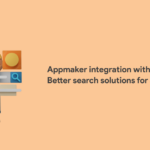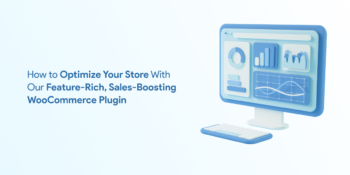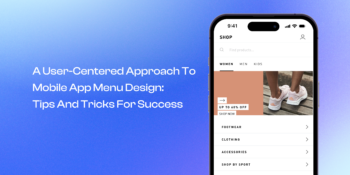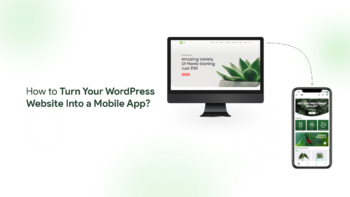Individuals and small businesses wishing to sell online will find Shopify’s basic service to be a terrific alternative. However, if you’re a large company with millions of dollars in sales, you might prefer a more personalized experience. That’s where Shopify Plus comes in—in a nutshell, it’s a more advanced Shopify.
Shopify Plus has the same basic dashboard and functions as Shopify, but adds more functions, integrations, access to your store’s underlying code, specialized support, and more.
In other words, Shopify is for people who want to start a small or medium business, and Shopify Plus is for people who want to start a large business.
Key differences between Shopify and Shopify Plus
In essence, Shopify Plus includes everything in the standard Shopify subscription, plus a few extras. Instead of focusing on what’s the same, we’ll show you how to tell the difference between Shopify and Shopify Plus by highlighting the additional major features/benefits that come with Shopify Plus and highlighting the key distinctions between the two platforms.
1. Dedicated support manager
Customers can contact Shopify for help by phone, email, or live chat. You can engage Shopify Experts if things get too complex.
Shopify Plus, on the other hand, provides specialized and dedicated assistance for your store. It appoints a Launch Engineer to your website who will guide you through the store setup and migration process. And the Launch Engineer will be there to assist you, whether it’s with third-party integrations or finding partners to work on custom projects for your company.
2. More theme customization
You can alter your Shopify theme templates using the editor with ordinary Shopify plans, though switching to an entirely different theme will be difficult.
The Shopify Plus package, on the other hand, allows for extensive customization and includes access to Shopify’s Liquid theme language. You’ll be able to make changes in the backend at the code level with Liquid in your toolbox, giving you more power.
3. Unlimited staff accounts
Staff accounts are another option to consider when comparing Shopify and Shopify Plus. Only a few limited staff accounts are allowed with the basic Shopify subscription.
Shopify Plus, on the other hand, allows you to add an infinite number of staff accounts as well as other authorization options.
You’ll be able to provide any number of members of your team access to your online store. In addition, in your store admin, you’ll have additional control over worker actions.
4. Increased checkout control
It’s only reasonable for you, as a store owner, to want to pay special attention to high-spending consumers and what they’re doing on your checkout page.
Shopify Plus allows you to personalize the checkout process based on the contents of your shopping basket or any other situation.
In addition, Shopify Scripts are available to users. You may adjust delivery methods, customer information, and payment options in the Script Editor, which provides you more flexibility. That isn’t the case with Shopify; to modify the checkout experience, you’ll require additional apps.
5. More API integrations
APIs are what allow third-party programs to be integrated with any website. Shopify Plus features expanded API resources such as GiftCard, User, and Multipass to help users get the most out of third-party apps. In case you didn’t know, a gift card is a type of alternative payment. Visitors to your website are smoothly redirected to your Shopify store when they use Multipass login (without separate login credentials and without the need to synchronize any customer database). You can add, remove, amend, and retrieve information on staff accounts using the User feature.
Shopify Plus also allows you to interface with third-party apps and even create your own private apps.
6. Exclusive apps
Shopify Plus members additionally have access to some special Shopify apps that aren’t available to ordinary Shopify users via their app store:
Users with a high volume of B2B sales will benefit from the wholesale channel.
Shopify Flow is a platform for eCommerce automation. It helps automate various customer-facing procedures and office processes within your business and across your apps using a simple visual builder. It saves and executes the triggers, conditions, and actions you specify to do a variety of tasks, such as marking loyal customers, sending reorder requests, and more. All of this is accomplished without the need for any code on your behalf.
Flash sales, product debuts, and sales campaigns can all be planned and automated with Launchpad. When the event is over, you can easily undo all of the changes.
The Script Editor is what allows you to build personalized shopping cart/checkout experiences. Customers can use small pieces of code to add discounts or adjust shipping and payment options. This reduces the number of abandoned shopping carts.
Import customer, product, and order records into your Shopify store with the Transporter app. This makes it simple to exchange customer information between stores.
To invite your clients imported from another platform or store to activate their accounts for your online business, use the Bulk Account Inviter. This tool comes in handy once you’ve imported client accounts from another platform or store.
7. Integrations with existing platforms
You can connect an unlimited number of apps to your Shopify store. It makes more sense for high-growth and complicated enterprises to integrate with their existing platforms. Using Shopify’s API, this is doable. Platforms for the following are examples:
- Third-party logistics (3PL)
- Warehouse management software (WMS)
- Global fulfillment partners
- Product information management (PIM)
- Enterprise resource planning (ERP)
- Inventory and order management (IMS and OMS)
- Customer relationship management (CRM)
8. Wholesale channels
Based on your online store, the wholesale channel allows you to construct a separate, password-protected site. This implies you can offer wholesale buyers special wholesale-only products or the same products at exclusive wholesale prices.
In a nutshell, Shopify Plus merchants can send invoices, track orders, use current product data and connectors, and manage both B2C and B2B enterprises from a single dashboard.
9. Merchant Success Program
A Merchant Success Program is available on Shopify Plus to assist users in getting the most out of the platform. They may assist you with third-party integrations, products, and platforms, as well as guidance to help you maximize your potential. You’ll be assigned a Merchant Success Manager who will assist you with everything you require.
In addition to the 24/7 assistance, the staff is ready to help you locate approved Shopify Plus Partners to keep you up to date on industry trends and assist you with events like flash discounts.
10. A single centralized dashboard for numerous store management
Users of Shopify Plus may now manage all of their stores, analytics, staff accounts, user permissions, and automation tools (such as Shopify Flow) from a single dashboard.
This dashboard gives you a complete picture of your business, encourages collaboration, and increases automation. This is especially true if you manage many stores or locations.
11. In-depth analytics options
Shopify has a sophisticated analytics dashboard where you can see information like sales, popular goods, landing pages or referrers, and more. You can use this application to create professional reports and get up-to-date information about your store.
12. Shopify Plus pricing
Regardless of your sales volume, the fundamental Shopify service includes flat pricing plans. For a specific price with Shopify Plus, you’ll need to speak with sales.
The charges are set at a minimum of $2,000 per month or 0.25 percent of monthly sales volume (maximum at $40,000), whichever is higher.
Apart from this, Shopify Plus subscribers have access to more than just the Merchant Success Program. When it comes to the dashboard and fundamental eCommerce features, Shopify and Shopify Plus are identical. The key difference between Shopify and Shopify Plus is that Shopify Plus allows you a lot more flexibility, support choices, and access to the underlying code of your site.










No Comments
Leave a comment Cancel